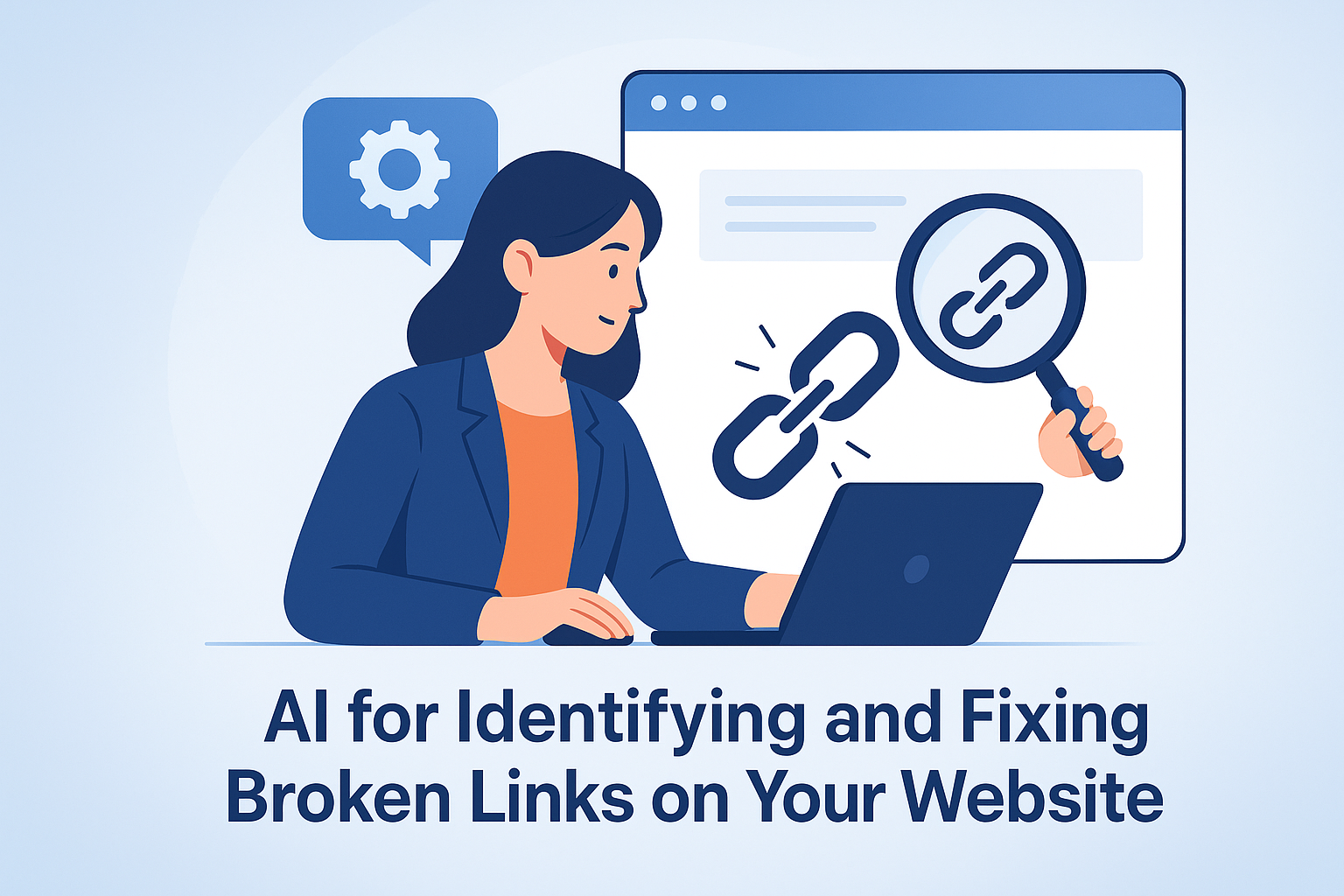Keyword cannibalization is one of the most misunderstood threats in modern SEO. It happens when multiple pages on your website compete for the same keyword, causing search engines to struggle to decide which page to rank—often resulting in ranking drops for both.
The problem isn’t always too much content—it’s often unintentional internal competition, caused by:
- Repetitive blog posts
- Misaligned anchor text
- Inconsistent internal linking
- Poor pillar/cluster structure
Fortunately, you don’t have to hunt down cannibalization manually. With AI-powered tools like DIYSEO GPT, the SEO AI Writer, and Link Marketplace, you can detect and fix keyword cannibalization automatically—using internal links as your first line of defense.
What Is Keyword Cannibalization?
Keyword cannibalization occurs when two or more pages on your site target the same keyword or phrase. Instead of reinforcing your SEO for that term, the pages:
- Split your authority
- Confuse Google about which to rank
- Compete with each other instead of working together
This leads to:
- Dropped rankings
- Poor click-through rates
- Missed traffic opportunities
- Disjointed internal link structures
AI can help you identify and fix cannibalization fast—by analyzing your existing data and re-aligning your internal links for clarity and performance.
Step-by-Step: Preventing Keyword Cannibalization with AI and DIYSEO
✅ Step 1: Detect Cannibalization with DIYSEO GPT
Start by running the following pre-written prompt inside DIYSEO GPT:
🔍 Top Keywords by Page
This prompt shows you which pages are ranking for each keyword across your site.
Use the Chat History tab to follow up:
“Are any of these keywords being targeted by multiple pages? Which ones should be consolidated or internally linked?”
DIYSEO GPT uses Google Search Console data to:
- Identify overlapping keyword rankings
- Surface pages that are competing for the same terms
- Recommend which page should be the primary “owner” for each keyword
✅ Step 2: Establish a Keyword Ownership Map
Once you identify which page should “own” each keyword, you’ll want to:
- Internally link all supporting pages to that primary page
- Adjust anchor text to reinforce keyword focus
- Avoid creating future content that targets the same keyword again
Prompt DIYSEO GPT:
“Which of these cluster pages should link to my main AI SEO pillar page to prevent cannibalization?”
This keyword-to-page clarity allows you to turn cannibalization into collaboration.
✅ Step 3: Fix Internal Link Anchors with SEO AI Writer
Anchor text matters. If 3 different pages link to 3 different URLs using the same anchor—Google gets confused.
Use the SEO AI Writer to:
✍️ Rewrite anchor text with context and clarity
Prompt:
“Rewrite this paragraph to link to /ai-seo-strategy using the anchor ‘AI SEO strategies for small businesses.’ Make the link natural and help avoid cannibalization with other AI posts.”
Repeat this for each link that points to a competing page, ensuring your anchors are:
- Topically aligned
- Keyword-reinforcing
- Unique to the target page’s primary term
✅ Step 4: Update Existing Internal Links Across Related Content
Run the Top Performing Pages prompt to find authority pages that should support your keyword-focused pillar content.
Follow up:
“From these top pages, which links or anchors should point to my keyword owner page for ‘AI keyword research’?”
Then use SEO AI Writer to:
- Reposition or rewrite those internal links
- Reduce over-linking to weaker or outdated posts
- Centralize keyword equity toward the designated pillar
This keeps your internal links from diluting relevance.
✅ Step 5: Avoid Future Cannibalization with Intent-Based Planning
Use DIYSEO GPT’s prompts like Query Position Changes or Top Queries by Clicks to:
- Find keywords already claimed by existing content
- Avoid writing new posts that target the same terms
- Recommend related but non-competing long-tail topics instead
Ask:
“Before I write about ‘AI SEO audits,’ is that keyword already ranking for another page?”
If it is, reposition the new content to support the original—don’t compete with it.
Bonus: Use Link Marketplace to Strengthen Keyword Owners
Once you’ve realigned internal links, use Link Marketplace to:
- Build backlinks to the primary keyword-owner pages
- Avoid external dilution of competing posts
- Reinforce the “winner” in Google’s eyes
Strategy:
- Identify your optimized “AI SEO Guide” as the keyword owner for AI SEO strategies
- Internally link all related content to that page
- Use Link Marketplace to place 3–5 backlinks to that guide
- Watch rankings improve while supporting pages lift session duration and authority
Cannibalization Prevention Workflow with AI
| Step | Tool | Task |
|---|---|---|
| Identify keyword overlaps | DIYSEO GPT – Top Keywords by Page | Find competing URLs |
| Map keyword ownership | GPT + Chat History | Assign “home pages” for each keyword |
| Fix link structure | SEO AI Writer | Redirect anchor text and link flow |
| Clean up top authority pages | GPT + Writer | Centralize keyword equity |
| Avoid duplicate targeting | GPT | Pre-screen content ideas |
| Reinforce winners | Link Marketplace | Build links to support your keyword map |
Real-World Example: Solving Cannibalization with Internal Links
Problem:
A digital marketing agency had three blog posts ranking inconsistently for “AI content strategy.” Google rotated rankings daily—and all three dropped out of top 10.
Solution with DIYSEO:
- Ran Top Keywords by Page → Found all three posts targeting the same keyword
- Chose the strongest post to “own” the term
- Used SEO AI Writer to rewrite anchor text in the other two posts, pointing to the main one
- Removed repetitive headers/content from supporting articles
- Used Link Marketplace to build DA 40+ backlinks to the main pillar
Results:
- Bounce rate on pillar page decreased by 18%
- Keyword returned to position #4 in SERPs
- Organic clicks to supporting pages increased via internal links
- Eliminated fluctuation and improved cluster-wide performance
Final Thoughts
Keyword cannibalization is silent SEO sabotage. But with the right AI-driven strategy, you can turn conflicting pages into a cohesive content network.
With DIYSEO, you can:
- Detect cannibalization using GPT-powered keyword and query mapping
- Fix internal links and anchors with SEO AI Writer
- Reinforce keyword ownership through Link Marketplace
Stop your pages from fighting each other. Use AI to unify, clarify, and dominate your keyword landscape.
Frequently Asked Questions
1. What exactly is keyword cannibalization, and why is it a problem?
Keyword cannibalization happens when multiple pages on your website are optimized for the same keyword or set of keywords. This becomes a problem because instead of one strong page ranking for that keyword, search engines struggle to decide which page is more relevant, leading to a situation where all such pages compete against each other. It dilutes page authority, confuses search engines, and often results in lower rankings and decreased traffic overall. With so many businesses vying for search engine supremacy, it’s vital to have clear, strong pages targeting distinct keywords to capture audience attention effectively.
2. How can AI help in preventing keyword cannibalization on a website?
AI can be incredibly powerful in combating keyword cannibalization by utilizing its advanced analytical capabilities to assess content across a website. It can identify instances where multiple pages are poorly optimized with overlapping keywords. Once identified, AI can suggest a strategic internal linking plan that creates a hierarchy of content, directing traffic and authority to the most relevant pages. Additionally, AI tools can provide recommendations for restructuring keywords to ensure each page has a distinct focus, thus enhancing clarity in search engine algorithms. The aim is to capitalize on AI’s ability to efficiently process large data sets and continuously adapt to changes in SEO trends, thereby maintaining optimal keyword strategy on a dynamic basis.
3. What are intelligent internal linking strategies, and how do they work?
Intelligent internal linking strategies involve creating a web of interconnected pages within a website that pass authority and relevance from one page to another strategically. It’s not just about linking pages randomly but understanding the context and value each link provides. With internal links, you can tell search engines which pages are most important and establish a site architecture that enhances user experience. AI helps by analyzing which pages should link to each other to prevent keyword overlap and maximize search visibility. It can guide website owners on placing internal links where they can be most effective, ensuring every click boosts the overall SEO strategy.
4. Are there specific AI tools or technologies currently preferred for this purpose?
Yes, several AI-powered SEO tools are popular for handling keyword cannibalization issues. Tools like SEMrush, Moz, and Ahrefs have integrated AI capabilities to provide detailed keyword analysis, recognizing pages that are at risk of cannibalization. They offer insights into optimizing internal links and restructuring site taxonomy to improve SEO outcomes. Moreover, AI-driven platforms like MarketMuse or Clearscope can guide content creation and alignment with search intent, ensuring each page uniquely targets specific keywords and search queries. The focus is on using AI not just to react to issues but proactively enhance SEO through data-driven strategies that reflect real-time user and algorithm changes.
5. How soon can I expect to see results after implementing AI strategies for keyword cannibalization?
The timeline for seeing meaningful results can vary based on the size of the website and the extent of the initial keyword cannibalization problem. After implementing AI-driven strategies, some changes may take a few weeks to reflect in search rankings as search engines crawl and reindex your site. However, the optimization process is ongoing. Regular updates to the AI system help it learn and adapt to new trends, allowing website owners to stay ahead of competitors. It’s important to understand that while the changes may not be immediate, the long-term benefits are substantial, offering sustainable improvements in rankings and traffic as the AI continuously refines internal linking and keyword strategies.



